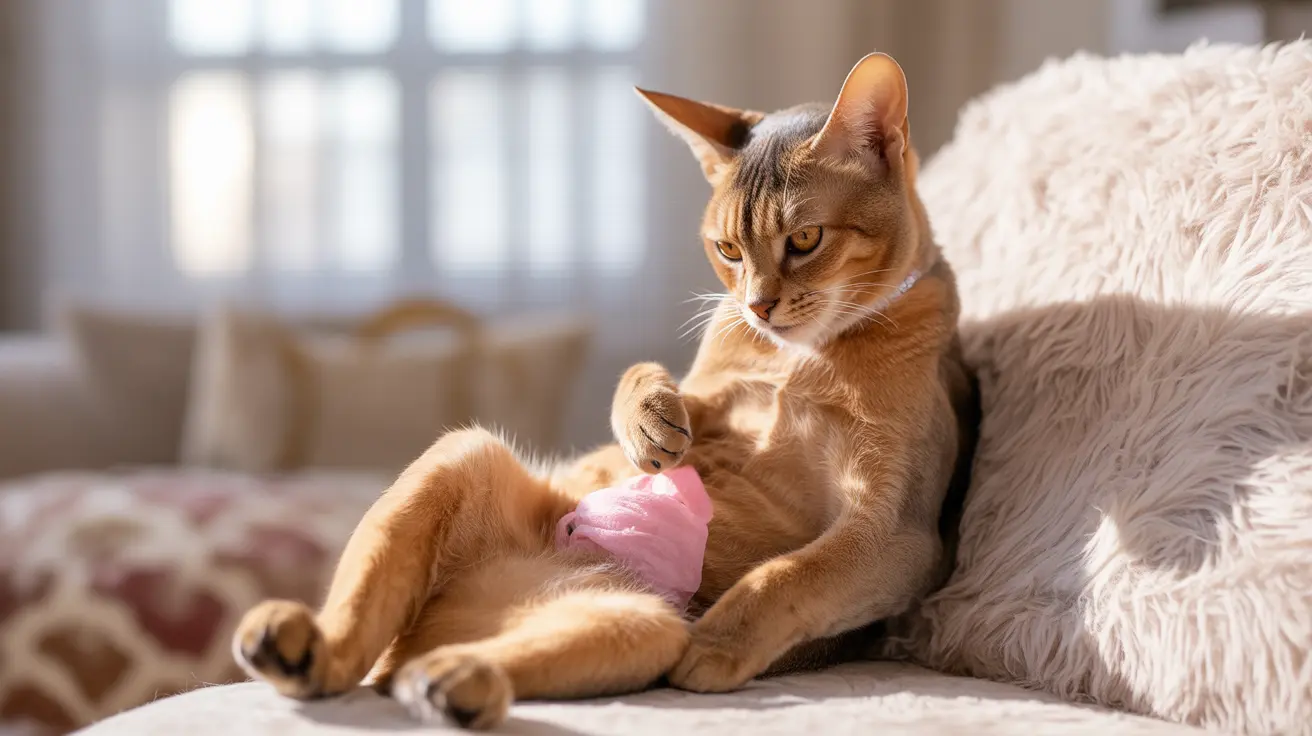Common Medical Causes of Fur Biting
Parasites and Skin Irritants
Fleas are the most common culprit behind excessive grooming behaviors. These parasites cause intense itching, leading cats to bite and chew their fur, particularly around the tail base and lower back. Other parasites like mites and lice can trigger similar responses. Up to 95% of flea populations actually live in your home environment rather than on your cat, making thorough household treatment essential.
Allergies and Skin Conditions
Environmental allergens, food sensitivities, and seasonal allergies frequently cause skin irritation that prompts fur biting. Common allergic reactions manifest as redness, inflammation, and persistent itching. Skin infections, whether bacterial or fungal, can also lead to excessive grooming as your cat attempts to soothe the discomfort.
Behavioral and Psychological Factors
Stress and Anxiety
Cats often respond to stress by overgrooming, which releases endorphins that temporarily calm them. Changes in environment, new pets or family members, or disruptions to routine can trigger this behavior. Certain breeds, including Siamese, Abyssinian, and Himalayan cats, are particularly prone to stress-induced grooming.
Boredom and Lack of Enrichment
Indoor cats without adequate mental and physical stimulation may resort to excessive grooming as a coping mechanism. This behavior can become compulsive over time, leading to significant fur loss and potential skin damage.
Identifying and Addressing the Problem
Warning Signs
Look for bald patches, particularly in easily accessible areas like the belly, inner legs, and tail. Red or irritated skin, increased hairball frequency, and changes in behavior are important indicators that your cat's grooming has become problematic.
Treatment Approaches
Treatment varies based on the underlying cause:
- Parasite control through veterinary-prescribed medications
- Allergy management through diet changes or medication
- Environmental enrichment with toys and climbing structures
- Stress reduction using pheromone diffusers and consistent routines
- Professional behavioral therapy for psychological causes
Prevention and Home Care
Establish a regular flea prevention routine and maintain a clean living environment. Provide plenty of environmental enrichment through climbing trees, scratching posts, and interactive toys. Monitor your cat's grooming habits and stress levels, particularly during times of change.
Frequently Asked Questions
Why is my cat biting or chewing his fur off and how can I tell if it's due to fleas or allergies?
Flea-related fur biting typically focuses on the tail base and lower back, often accompanied by visible flea dirt. Allergic reactions tend to cause more generalized itching and may include facial or neck involvement. A veterinary examination can definitively determine the cause.
What medical conditions could cause my cat to overgroom and lose fur?
Common medical causes include parasites, allergies, skin infections, hormonal imbalances, and autoimmune conditions. Pain from conditions like arthritis can also trigger localized overgrooming.
How can I stop my cat from biting his fur off because of stress or anxiety?
Address stress by maintaining consistent routines, providing safe hiding spaces, using pheromone products, and ensuring adequate environmental enrichment. Severe cases may require veterinary-prescribed anti-anxiety medication.
When should I take my cat to the vet for excessive grooming and fur loss?
Seek veterinary care if you notice persistent fur loss, skin irritation, open sores, or significant behavioral changes. Early intervention prevents complications and improves treatment outcomes.
Can boredom cause my cat to chew his fur off and how can I prevent it?
Yes, boredom can lead to excessive grooming. Prevent this by providing daily interactive play sessions, puzzle feeders, climbing opportunities, and rotating toys to maintain interest and mental stimulation.






